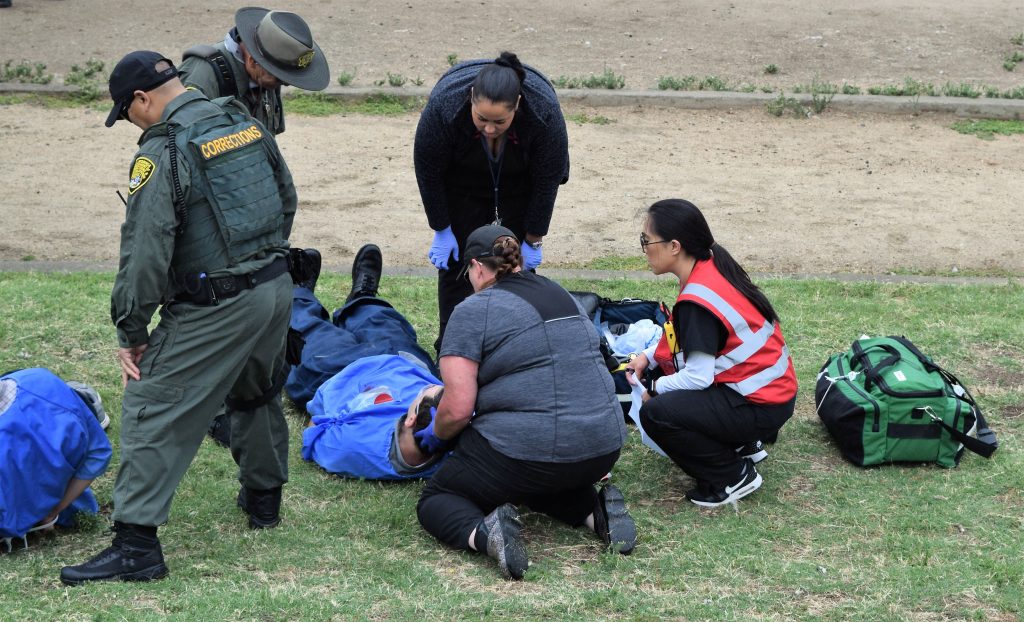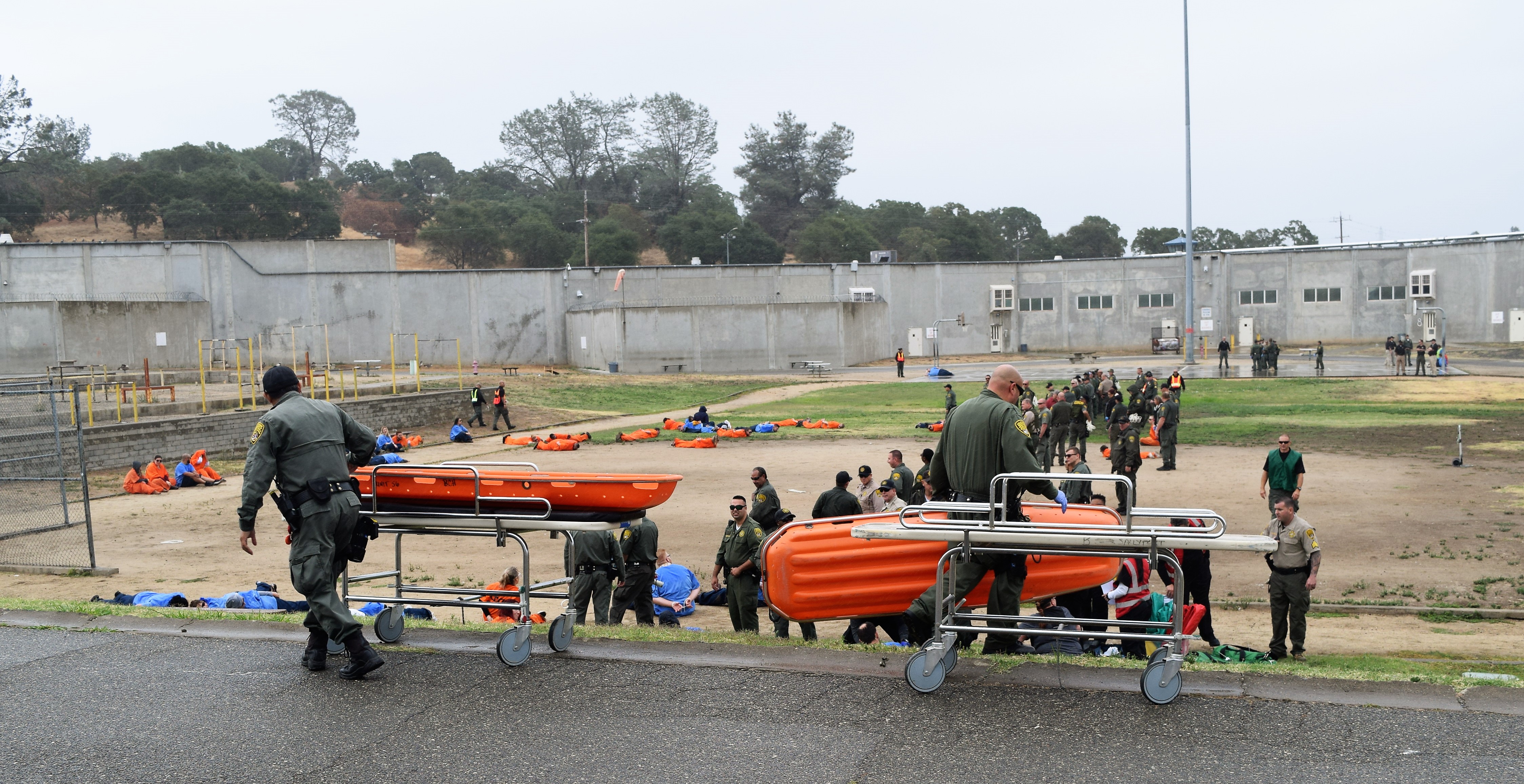By CCHCS staff
Within seconds of when the two large inmate groups began fighting in the yard, the alarms filled the air, and a booming loudspeaker began issuing commands to the combatants. Almost immediately, radios started giving out details on the disturbances: two in the yard, one in the gym. Correctional Officers, appropriately geared up, began forming on the outskirts, waiting for the activity to defuse and the inmates to get down on the ground.
Medical personnel, with their well-stocked Emergency Medical Response bags trailing behind them, were at the ready to rush in as soon as custody gave the go-ahead.
The multiple-casualty incident had begun on this rainy day in September on the grounds of California State Prison, Sacramento. Dozens of volunteers posed as inmates in the simulated fights as custody and medical staff put months of training to work.
Besides the usual incident responses being evaluated, the focus was on the Emergency Medical Response Program (EMRP) that had been introduced six months ago.

With custody regaining control, the medical teams moved in. They quickly discovered about two-dozen “injured” patients. Each actor had a predetermined injury for staff to diagnose and address with the new protocols and tools. Some of those tools include a new blood clotting process administered on the spot, saving precious time. The patients were stabilized and quickly moved to the new Central Health Services Building treatment rooms.
Tameka Thorpe, LVN and EMRP Instructor and a subject matter expert, was on hand to observe and help fellow staff work through the scenarios. She said the staff had 40 hours of training with the new program and tools and it showed.
“The staff felt confident and performed really well,” Thorpe remarked.
George Gomez, Chief Nurse Executive and part of the EMRP training team, was also impressed with the Emergency Response displayed using the multi-disciplined approach that included Medical, Dental, Mental Health and Custody.
“Training helps the multiple disciplines prepare for a mass incident like today,” Gomez said, as he watched the activity. “And not just for the safety of our staff, but also treating the patients correctly, making sure we can deliver the right care, and also handling delivering to an outside resource if we can’t handle it in our institution.”
The teams then held a debriefing to analyze the exercise, beginning with the alarm response to triage to the treatment rooms to handing off, where appropriate, to community resources. Communication, speed and the new tools were explored in the briefing.
Medical CEO Anatole Moore was also pleased with the results of the multi-incident casualty exercise, acknowledging a few logistical challenges in an event that included over 400 staff members and featured a surprise rainstorm. He noted the importance of the EMRP training that contributed to the collaboration he had witnessed between custody and medical.
This evidence-based training and staff participation is stressed in the EMRP Memo: “The success of this program and the resultant improvement in the quality of emergency medical response and patient safety is highly dependent on individual, institutional, regional, and executive level involvement. It is expected that all staff will support and implement this program within their area of responsibility.”
When asked how many staff had completed the training, Moore said, “One hundred percent.”
With that level of commitment, the Emergency Medical Response Program will continue to provide the staff with the knowledge, skills and tools needed to manage and handle medical alarm activations within the institutions. Full roll-out of the program to all institutions is expected to be completed by spring 2020.

